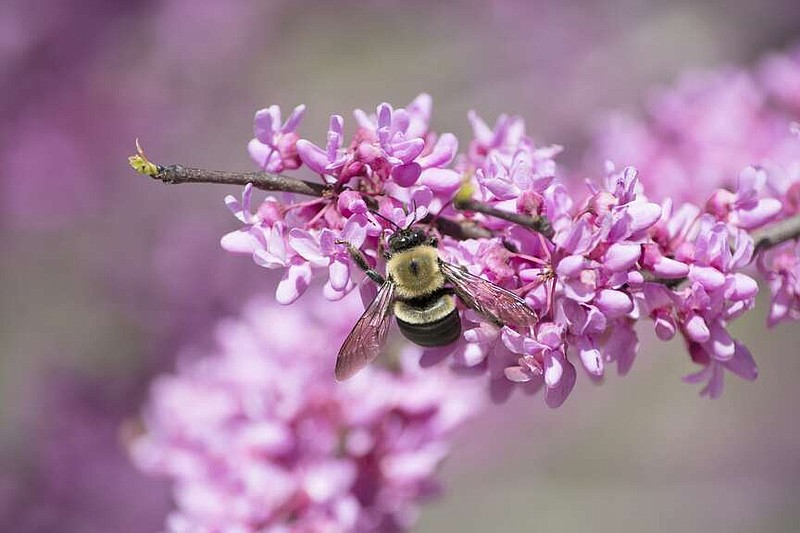Spring cleaning, indoors and out, is a longstanding tradition for many households. But as we learn more about the important pollinators, insect-eating toads, songbirds and beneficial insects, the more we realize we need to adjust some of our timing and methods.
It is safe to remove winter protection, such as mulch, when temperatures begin to hover around freezing or your plants begin to sprout. Keep some frost protection handy just in case you need to protect any tender plants from a hard freeze.
Always check for frost heaving. When cold winters are interrupted by warm spells, bare soil may thaw and then refreeze. This temperature fluctuation can cause the soil to shift and push spring flowering bulbs, coral bells, daylilies and other perennials out of the soil. Just gently push them back in place or reset in the soil, making sure the roots are covered.
Wait for temperatures to be consistently above 50 degrees before cutting back perennials that were left standing. This gives any beneficial insects overwintering in the hollow stems time to emerge and find a summer home.
Cut some of the stems to the ground and some back to 18-24 inches on each plant. These old stems provide summer homes for some of our native bees. As new growth emerges in spring, it will mask the older stems so your garden will look as beautiful as ever.
If you can't wait, stack the stems out of sight until temperatures rise and pollinators have a chance to emerge. Then chop and compost the debris in midsummer.
Tie or bungy-cord tall ornamental grass plants before cutting them back to make cleanup easier. Then use a hand pruner for small jobs or a string trimmer or hedge clipper for larger plantings. Wait for new growth to fill in shorter grasses and simply comb your fingers through the plant to remove the old brown leaves.
Leave fall leaves on the soil surrounding the plants to serve as mulch, suppressing weeds and conserving moisture. As the leaves break down, they add organic matter and nutrients to the soil. They also provide homes for beneficial insects and insulate the soil for plants, toads and more.
Mark the location of perennials like butterfly weed and hardy hibiscus that emerge later than most plants in spring. This helps to avoid accidentally weeding them out. Leave a few stems standing, use plant markers or, next fall, plant some spring flowering bulbs near the plants to serve as a colorful placeholder.
Consider leaving some sunny spots bare for ground-nesting bees. Avoid areas like entryways and gathering spots where people and the bees may collide. Although the bees are docile and not likely to sting, people are often fearful, leading to their elimination. Setting aside some out-of-the-way spaces for ground-nesting bees allows everyone to coexist more happily.
This is also a good time to tidy up garden beds and lawn edges. You'll slow the invasion of weeds and grass into garden beds and lawn encroaching onto walks.
Remove weeds as they appear. The smaller weeds are easier to remove and eliminating them before they flower and set seed means fewer weeds to pull in the future.
Take advantage of the delay in spring cleaning by cleaning and sharpening your tools. When the temperatures are right, with tools in hand, you'll be ready to get busy in the garden.

